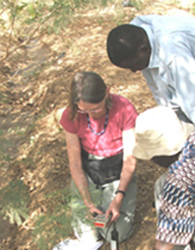Using treated wastewater for irrigation
The INCO 2 Programme sponsors cooperative research projects between EU Member States and Third Countries. One example is the UBENEFIT project, which brought European expertise in wastewater treatment to countries in sub-Saharan Africa. During UBENEFIT, the Institut de l'Environnement et Recherches Agricoles (INERA) helped to establish a peri-urban wastewater treatment system in Burkina Faso. The introduction of inexpensive stabilisation ponds helped bring microbiological water quality indicators in line with standards set by the World Health Organisation. For instance, counts of faecal coliforms and worms dropped to 104/100ml and less than one per litre respectively. The treated wastewater was subsequently used to irrigate new stands of fodder and fuel-producing trees planted during UBENEFIT. This represented significant progress considering that up until then untreated sewage was the primary source of irrigation water for agricultural applications in Burkina Faso. An added advantage discovered by INERA was that elevated levels of phosphorus and nitrogen in the treated wastewater eliminated the need, and the cost, to apply additional fertiliser. Consequently, the UBENEFIT project achieved not only health-related, but also financial and environmental benefits. Figure caption: Monitoring soil water dynamics following irrigation.



